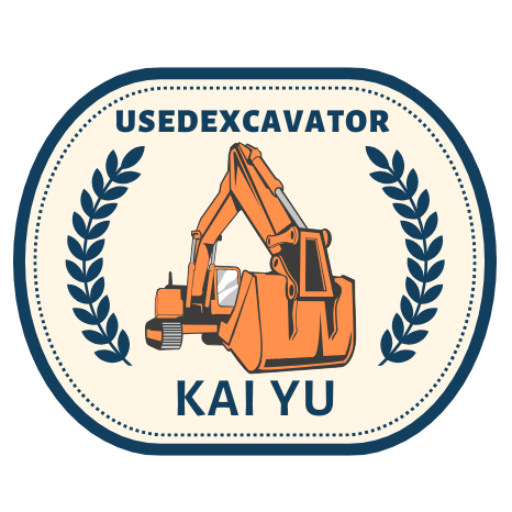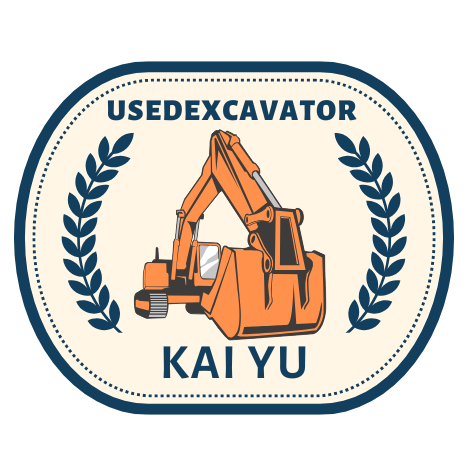The global market for heavy machinery is increasingly looking East. China has emerged as a colossal hub for high-quality, well-maintained used excavators, bulldozers, loaders, and graders from world-leading brands like Caterpillar excavator, Komatsu excavator, Volvo excavator, and Hitachi Excavator, as well as competitive machines from domestic giants like Sany Excavator and XCMG Excavator. The value proposition is clear: access to advanced technology and robust build quality at a fraction of the price of new equipment.
However, the path to a successful purchase is fraught with potential pitfalls. Distance, language barriers, complex logistics, and the inherent risk of buying sight-unseen can turn a seemingly great deal into a financial nightmare. This definitive guide is designed to equip you with the knowledge to navigate the process confidently, avoid devastating mistakes, and ensure your investment drives profitability for years to come.

Chapter 1: The Seven Deadly Sins of Importing Used Heavy Machinery
Understanding these common errors is the first step toward avoiding them.
- Sin #1: Prioritizing Price Over Everything: The cheapest machine often carries the highest long-term cost. A low initial price can signal hidden damage, imminent major repairs, or counterfeit parts. Focus on Total Cost of Ownership (TCO), which includes purchase price, shipping, import duties, and potential refurbishment.
- Sin #2: Inadequate Equipment Inspection: Relying solely on photos and a short video is a recipe for disaster. A superficial inspection misses critical issues with the undercarriage, hydraulic system, and internal engine components.
- Sin #3: Ignoring the Undercarriage (Rollers, Tracks, Sprockets): The undercarriage is one of the most expensive components to repair or replace. Wear on roller assemblies, idlers, and sprockets must be measured precisely. A worn undercarriage can add 20-30% to your machine’s cost upon arrival.
- Sin #4: Overlooking Import Regulations and Duties: Failing to understand your home country’s regulations on importing used machinery can lead to seized shipments, massive fines, or machines that cannot be legally operated. Research EPA Tier standards, customs codes, and duty rates beforehand.
- Sin #5: Poor Logistics Planning: Choosing the wrong Incoterms (e.g., not understanding FOB vs. CIF) or an unreliable freight forwarder can lead to port delays, damage during transit, and unexpected handling fees.
- Sin #6: Working with Unverified Suppliers: The internet is full of intermediaries and fake companies. Wiring a deposit to an unverified entity is an enormous risk. Due diligence on your supplier is non-negotiable.
- Sin #7: Neglecting Parts and Support Availability: Ensure the model you choose has parts and service support in your region. A great deal on a rare model is worthless if you can’t find a mechanic or get a hydraulic pump for it.
Chapter 2: The Expert’s Pre-Purchase Checklist: Due Diligence is Key
Before you even look at a specific machine, complete this checklist.
- Define Your Needs: What is the primary application? (Trenching, loading, demolition). This determines whether you need a standard excavator, a Loader (e.g., wheeled loader), a bulldozer for grading and pushing, or a motor grader for fine grading. Determine the necessary size, horsepower, and attachments.
- Research Your Market’s Regulations: Contact your local customs broker and equipment regulatory body to clarify all requirements.
- Set a Realistic Budget: Include a 10-15% contingency for unforeseen repairs and shipping costs.
- Identify Reputable Brands:
- Caterpillar Excavator (CAT): Known for durability, strong resale value, and unparalleled global dealer support.
- Komatsu Excavator: Renowned for their advanced hydraulic systems, fuel efficiency, and reliability.
- Volvo Excavator: praised for operator comfort, safety features, and overall performance.
- Hitachi Excavator: Often lauded for their digging power and robustness, especially in mining applications.
- Sany Excavator & XCMG Excavator: Leading Chinese brands offering exceptional value, modern features, and rapidly improving quality and global parts networks.
Chapter 3: The Virtual Inspection Masterclass: What to Demand from Your Supplier
A professional supplier will transparently provide all this information.
- High-Resolution Photography (360-Degrees): Insist on clear pictures of the exterior, interior cab (hour meter!), engine bay, hydraulic cylinders (for scoring), and the undercarriage from multiple angles.
- Comprehensive Video Walkaround: A narrated video should include:
- Cold start of the engine.
- Operation of all hydraulic functions: boom, arm, bucket, swing.
- Driving the machine forward and backward.
- Close-ups of the undercarriage while moving.
- Critical Documentation:
- Service History Records: Proof of regular maintenance.
- Detailed Technical Specification Sheet.
- CE / ISO Certificates (if applicable).
- Proof of Ownership and export readiness.
- The Undercarriage Report: Demand a professional measurement report for the roller flanges, track chain link height, and sprocket teeth. This data is objective and tells the true story of wear.
Chapter 4: Beyond the Machine: Evaluating Your Supplier Partner
Your supplier is your most important safeguard. Here’s what sets a professional partner apart—and what we, at [Your Company Name], embody.
- Physical Yard and Transparency: Do they have a real address and a large inventory you can see? We operate from a massive, secure yard and offer live video calls to inspect any machine in real-time.
- Technical Expertise: Can their sales team answer deep technical questions about a Caterpillar excavator’s hydraulic system or a Komatsu excavator’s electronic controls? Our team consists of trained engineers and mechanics.
- In-House Refurbishment Capability: The best suppliers don’t just sell; they recondition. We have a state-of-the-art workshop for professional repair, repainting, and parts replacement, ensuring you get a machine that is “site-ready.”
- Quality Control Process: Ask about their internal QC checklist. We perform a 50-point inspection on every machine, from engine compression tests to hydraulic pressure checks.
- Logistics and Shipping Assistance: A true partner guides you through the entire process. We have long-standing relationships with trusted freight forwarders and can handle everything from container stuffing to documentation, ensuring a smooth FOB or CIF process.
Chapter 5: Navigating the Transaction and Logistics Labyrinth
- Secure Payment Terms: Use secure methods like Letter of Credit (L/C) or escrow services. Be wary of suppliers who only demand full wire transfers upfront.
- Incoterms Matter: Understand your responsibilities.
- FOB (Free On Board): You own the goods and assume risk once they are loaded on the vessel at the Chinese port. You control the main shipping leg. This is often preferred for greater control.
- CIF (Cost, Insurance, Freight): The supplier arranges and pays for shipping and insurance to your port. This is simpler but offers you less control over carrier choice.
- Insurance: Never, ever ship without comprehensive marine insurance. It is a small price for peace of mind against damage or loss at sea.
- Documentation: Ensure you receive a clean, professional Bill of Lading, Commercial Invoice, Packing List, and Certificate of Origin. These are crucial for customs clearance.
Conclusion: Turn a Perceived Risk into Your Greatest Advantage
Importing a used excavator, loader, or grader from China is not a gamble—when you are armed with the right knowledge and partnered with the right supplier. It is a strategic business decision that can provide a significant competitive edge through superior equipment at a lower capital outlay.
By following this guide, you move from a position of uncertainty to one of empowered confidence. You can ask the right questions, demand the right documentation, and identify a supplier who is a true partner in your success.


